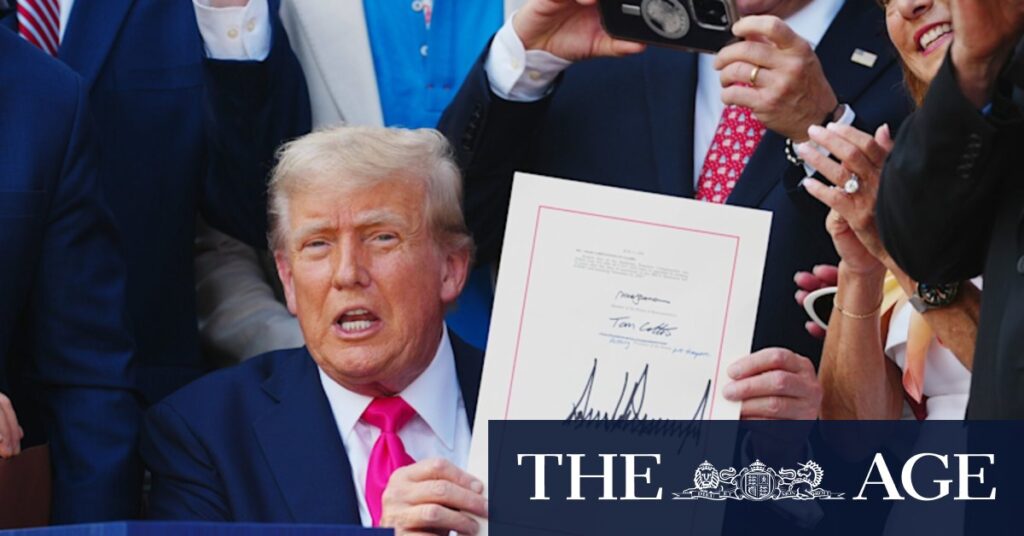
Thousands of Australian business travelers, students, and workers planning to visit the United States will soon face a $US250 ($383) visa application fee. This change is part of President Donald Trump’s newly signed “One Big Beautiful Bill,” which aims to overhaul various aspects of U.S. immigration policy.
While most Australians traveling to the U.S. as tourists use the Electronic System for Travel Authorization (ESTA) waiver program, they will now experience a modest increase in the cost of the waiver—from $US21 ($32) to $US40 ($60). The U.S. Department of Homeland Security has been granted the authority to implement the new “visa integrity fee” starting October 1.
Understanding the New Visa Fee
The new fee will apply to travelers who are not eligible for the ESTA visa waiver. This includes individuals seeking entry through various visa categories such as the H-1B for specialty occupations, F-1 for academic students, B-1/B-2 for business or tourist visits, and J-1 for exchange visitors. The introduction of this fee marks a significant shift in U.S. immigration policy, reflecting the administration’s focus on tightening entry requirements.
The announcement comes as part of a broader strategy to enhance national security and ensure the integrity of the U.S. visa system. According to sources within the Department of Homeland Security, the fee aims to cover the costs associated with processing and maintaining the visa system, which has seen increased scrutiny and demand in recent years.
Impact on Australian Travelers
For Australian travelers, the fee represents an additional hurdle in the already complex process of securing a U.S. visa. Business travelers and students, who frequently travel for professional and educational purposes, may feel the financial burden more acutely. The Australian government has yet to comment on the potential impact of these changes on bilateral relations and travel between the two nations.
Meanwhile, travel industry experts express concern over the potential deterrent effect the fee might have on international travel to the U.S. “This fee could discourage business and educational exchanges, which are vital for fostering international collaboration and understanding,” said Dr. Emily Carter, an international relations expert at the University of Sydney.
Historical Context and Expert Opinions
The move represents a continuation of President Trump’s immigration policies, which have consistently emphasized stricter controls and increased fees. Historically, visa fees have been used as a tool to manage immigration flows and fund administrative processes. However, the scale and timing of this increase have drawn comparisons to previous administrations’ approaches to immigration reform.
According to immigration attorney Michael Greene, “While fee adjustments are not uncommon, the magnitude of this increase is unusual and could signal a more restrictive stance on non-immigrant visas.” Greene further noted that the fee might disproportionately affect applicants from countries with weaker currencies compared to the U.S. dollar.
Looking Ahead
The introduction of the visa integrity fee is likely to spark debate among policymakers and stakeholders in both the U.S. and Australia. As the October 1 implementation date approaches, travelers and immigration officials will need to navigate the new requirements and assess their broader implications.
In the coming months, it will be crucial to monitor the fee’s impact on travel patterns and international relations. The U.S. government may need to address concerns from affected countries and consider adjustments to ensure that legitimate travel and exchange programs are not unduly hindered.
Ultimately, the success of this policy will depend on its ability to balance national security objectives with the need to maintain strong international ties and facilitate global mobility.







